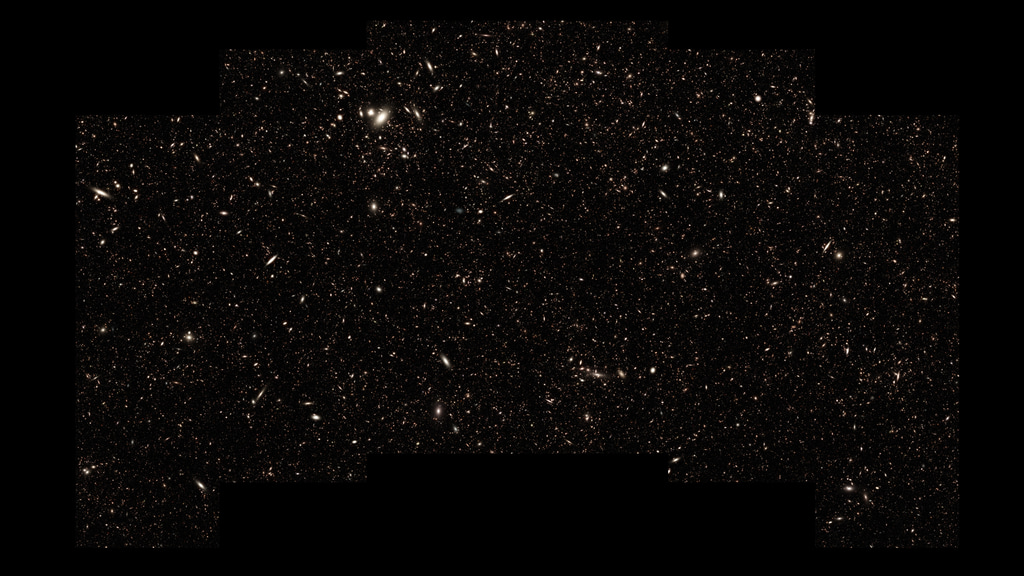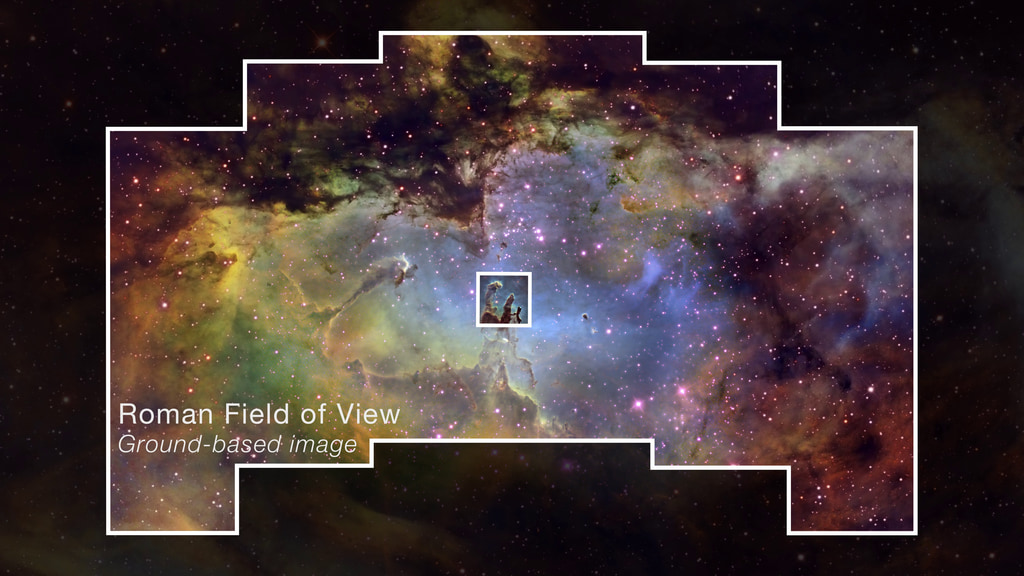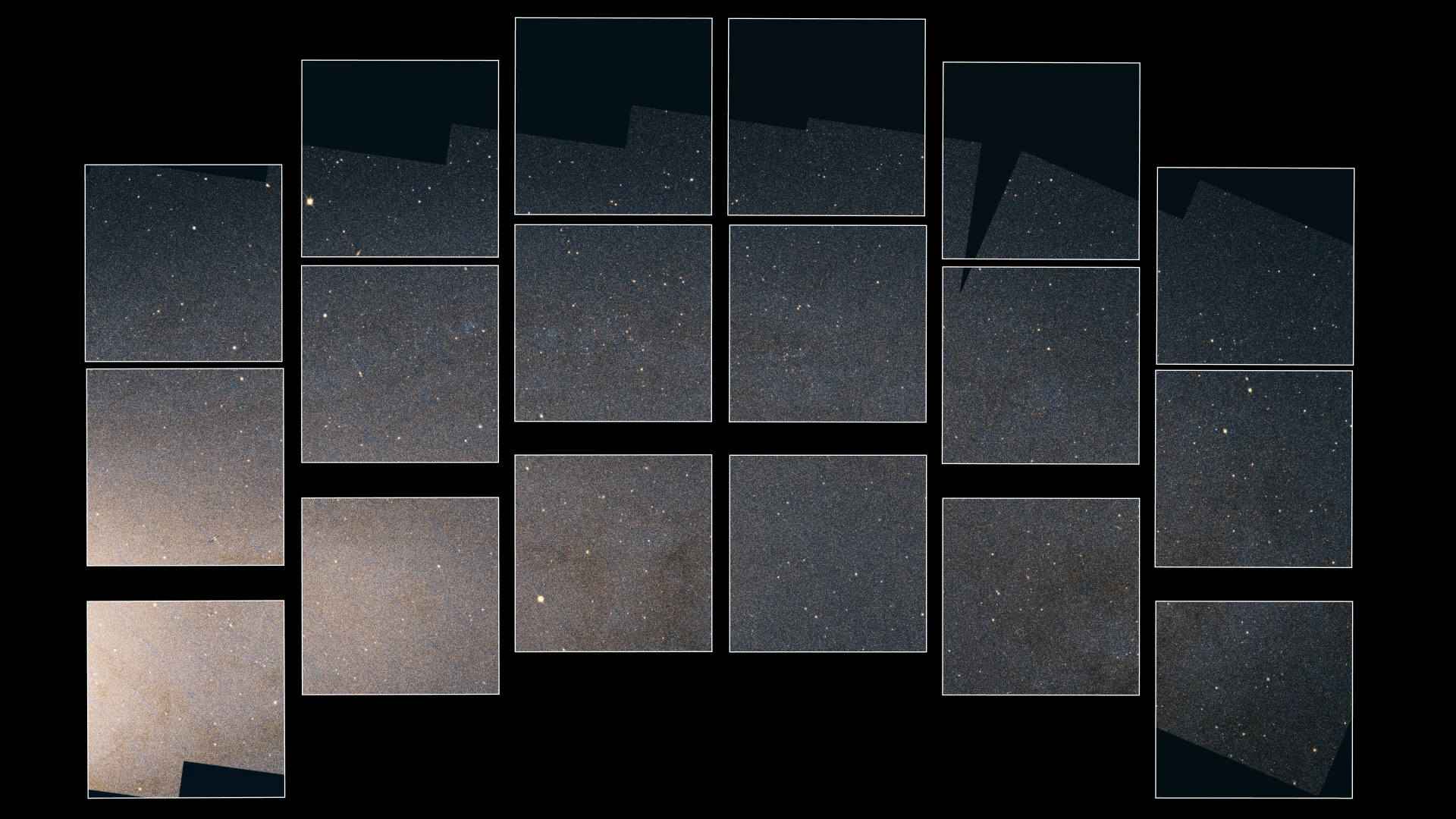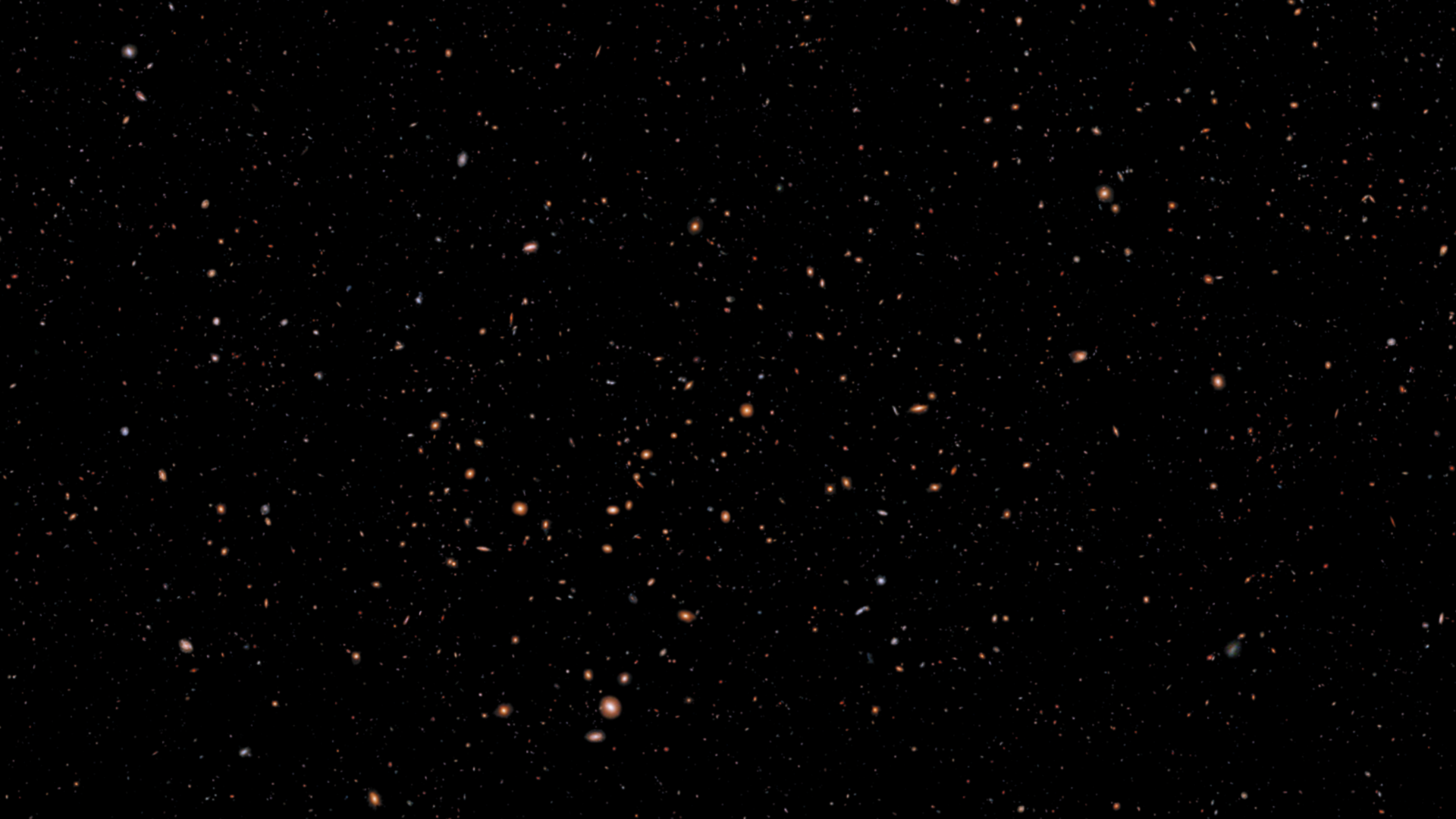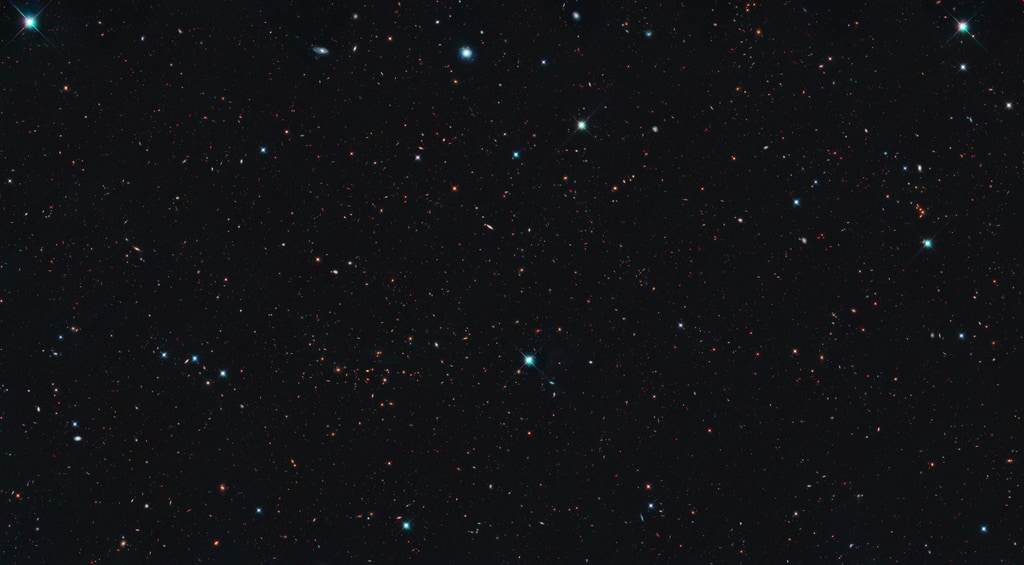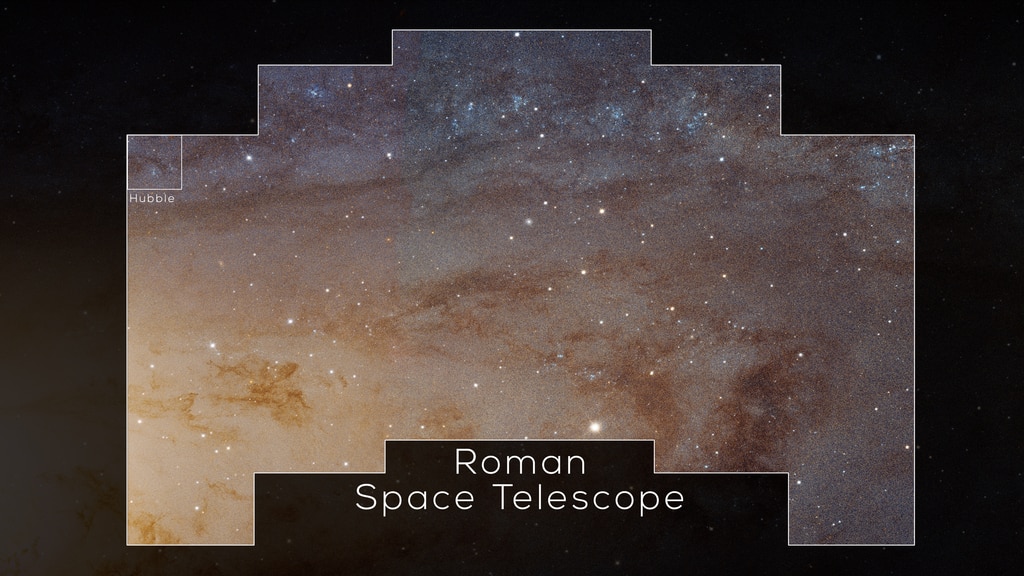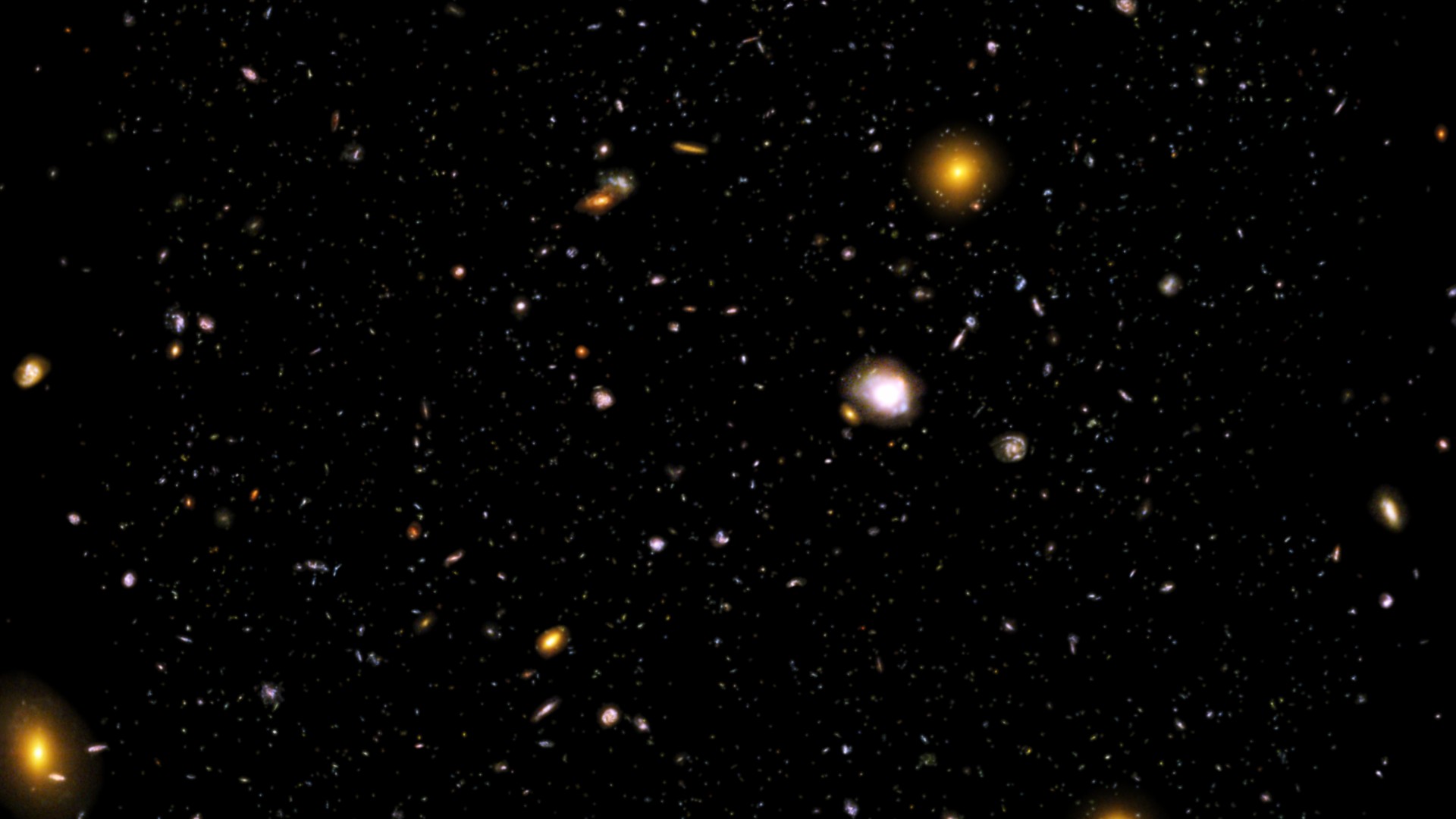Imagining A Roman Space Telescope Ultra Deep Field Image
From late 2003 into 2004, Hubble captured its iconic Ultra Deep Field image. It changed our understanding of the universe. With 100 times more coverage,what could happen if the Nancy Grace Roman Space Telescope did the same?
Music: "Solaris-alternate track" from Universal Production Music
Watch this video on the NASA Goddard YouTube channel.
Complete transcript available.
One of the Hubble Space Telescope’s most iconic images is the Hubble Ultra Deep Field, which unveiled myriad galaxies across the universe, stretching back to within a few hundred million years of the Big Bang. Hubble peered at a single patch of seemingly empty sky for hundreds of hours beginning in September 2003, and astronomers unveiled this galaxy tapestry in 2004 with more observations in subsequent years.
NASA’s upcoming Nancy Grace Roman Space Telescope will be able to photograph an area of the sky at least 100 times larger than Hubble with the same crisp sharpness. Among the many observations that will be enabled by this wide view on the cosmos, astronomers are considering the possibility and scientific potential of a Roman Space Telescope “ultra-deep field.” Such an observation could reveal new insights into subjects ranging from star formation during the universe’s youth to the way galaxies cluster together in space.
Roman will enable new science in all areas of astrophysics, from the solar system to the edge of the observable universe. Much of Roman’s observing time will be dedicated to surveys over wide swaths of the sky. However, some observing time will also be available for the general astronomical community to request other projects. A Roman ultra deep field could greatly benefit the scientific community, say astronomers.
As an example, a Roman ultra-deep field could be similar to the Hubble Ultra Deep Field – looking in a single direction for a few hundred hours to build up an extremely detailed image of very faint, distant objects. Yet while Hubble snagged thousands of galaxies this way, Roman would collect millions. As a result, it would enable new science and vastly improve our understanding of the universe.
One of the greatest challenges of the Roman mission will be learning how to analyze the abundance of scientific information in the public datasets that it will produce. In a sense, Roman will create new opportunities not only in terms of sky coverage, but also in data mining.
A Roman ultra-deep field would contain information on millions of galaxies – far too many to be studied by researchers one at a time. Machine learning—a form of artificial intelligence—will be needed to process the massive database. While this is a challenge, it also offers an opportunity.
From late 2003 into 2004, Hubble captured its iconic Ultra Deep Field image. It changed our understanding of the universe. With 100 times more coverage,what could happen if the Nancy Grace Roman Space Telescope did the same?
Shortened one minute version in square aspect ratio for social media.
Music: "Solaris-alternate track" from Universal Production Music
Complete transcript available.

Comparative image of the Hubble Ultra Deep Field to scale with the Roman field of view.

The same amazing resolution, but on a much larger scale! @NASAHubble gave the world the iconic deep field images that captured thousands of galaxies, and the Roman space telescope would be able to do it 100 times larger and capture millions!
This zoom-out animation begins with a view of the Hubble Ultra Deep Field (outlined in blue), which represents the deepest portrait of the universe ever achieved by humankind, at visible, ultraviolet and near-infrared wavelengths. The view then expands to show a wider Hubble survey of that area of sky (white outline), which captured about 265,000 galaxies in a large mosaic. Expanding further, we see the Hubble data overlaid on a ground-based view using data from the Digitized Sky Survey.
An orange outline shows the field of view of NASA’s upcoming Nancy Grace Roman Space Telescope. Roman’s 18 detectors will be able to observe an area of sky at least 100 times larger than the Hubble Ultra Deep Field at one time, with the same crisp sharpness as Hubble.
Credit: NASA, ESA, A. Koekemoer (STScI), and A. Pagan (STScI)

This composite image illustrates the possibility of a Roman Space Telescope “ultra deep field” observation. In a deep field, astronomers collect light from a patch of sky for an extended period of time to reveal the faintest and most distant objects. This view centers on the Hubble Ultra Deep Field (outlined in blue), which represents the deepest portrait of the universe ever achieved by humankind, at visible, ultraviolet and near-infrared wavelengths. Two insets reveal stunning details of the galaxies within the field.
Beyond the Hubble Ultra Deep Field, additional observations obtained over the past two decades have filled in the surrounding space. These wider Hubble observations reveal over 265,000 galaxies, but are much shallower than the Hubble Ultra Deep field in terms of the most distant galaxies observed.
These Hubble images are overlaid on an even wider view using ground-based data from the Digitized Sky Survey. An orange outline shows the field of view of NASA’s upcoming Nancy Grace Roman Space Telescope. Roman’s 18 detectors will be able to observe an area of sky at least 100 times larger than the Hubble Ultra Deep Field at one time, with the same crisp sharpness as Hubble.
Credit: NASA, ESA, and A. Koekemoer (STScI)
Acknowledgement: Digitized Sky Survey

This composite image illustrates the possibility of a Roman Space Telescope “ultra deep field” observation. In a deep field, astronomers collect light from a patch of sky for an extended period of time to reveal the faintest and most distant objects. This view centers on the Hubble Ultra Deep Field (outlined in blue), which represents the deepest portrait of the universe ever achieved by humankind, at visible, ultraviolet and near-infrared wavelengths. Two insets reveal stunning details of the galaxies within the field.
Beyond the Hubble Ultra Deep Field, additional observations obtained over the past two decades have filled in the surrounding space. These wider Hubble observations reveal over 265,000 galaxies, but are much shallower than the Hubble Ultra Deep field in terms of the most distant galaxies observed.
These Hubble images are overlaid on an even wider view using ground-based data from the Digitized Sky Survey. An orange outline shows the field of view of NASA’s upcoming Nancy Grace Roman Space Telescope. Roman’s 18 detectors will be able to observe an area of sky at least 100 times larger than the Hubble Ultra Deep Field at one time, with the same crisp sharpness as Hubble.
Credit: NASA, ESA, and A. Koekemoer (STScI)
Acknowledgement: Digitized Sky Survey
For More Information
Credits
Please give credit for this item to:
NASA's Goddard Space Flight Center. However, individual items should be credited as indicated above.
-
Producer
- Scott Wiessinger (USRA)
-
Writer
- Christine Pulliam (STScI)
-
Public affairs officer
- Claire Andreoli (NASA/GSFC)
-
Editor
- Scott Wiessinger (USRA)
-
Science writer
- Ashley Balzer (ADNET Systems, Inc.)
Release date
This page was originally published on Monday, January 11, 2021.
This page was last updated on Wednesday, May 3, 2023 at 1:44 PM EDT.
